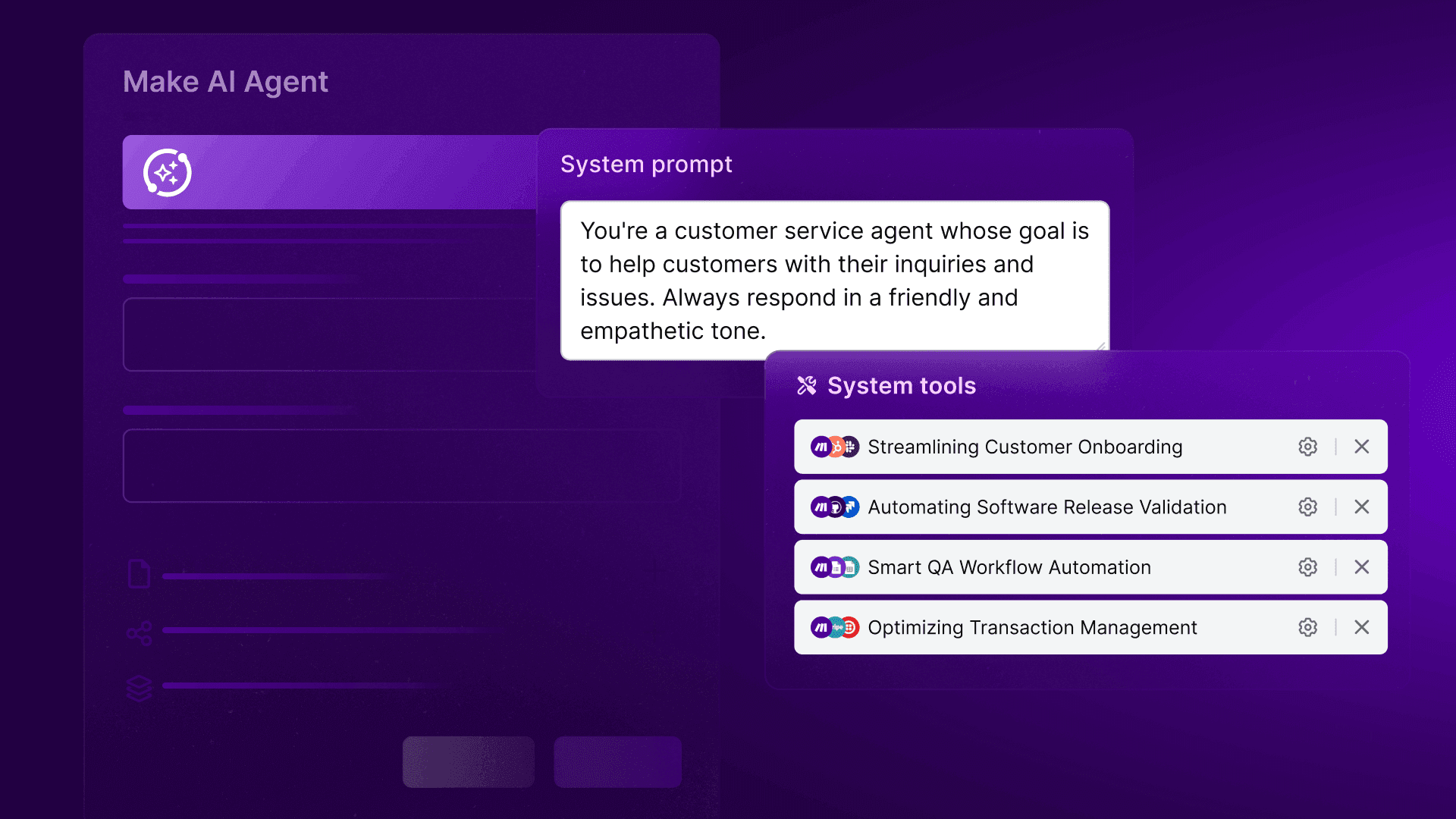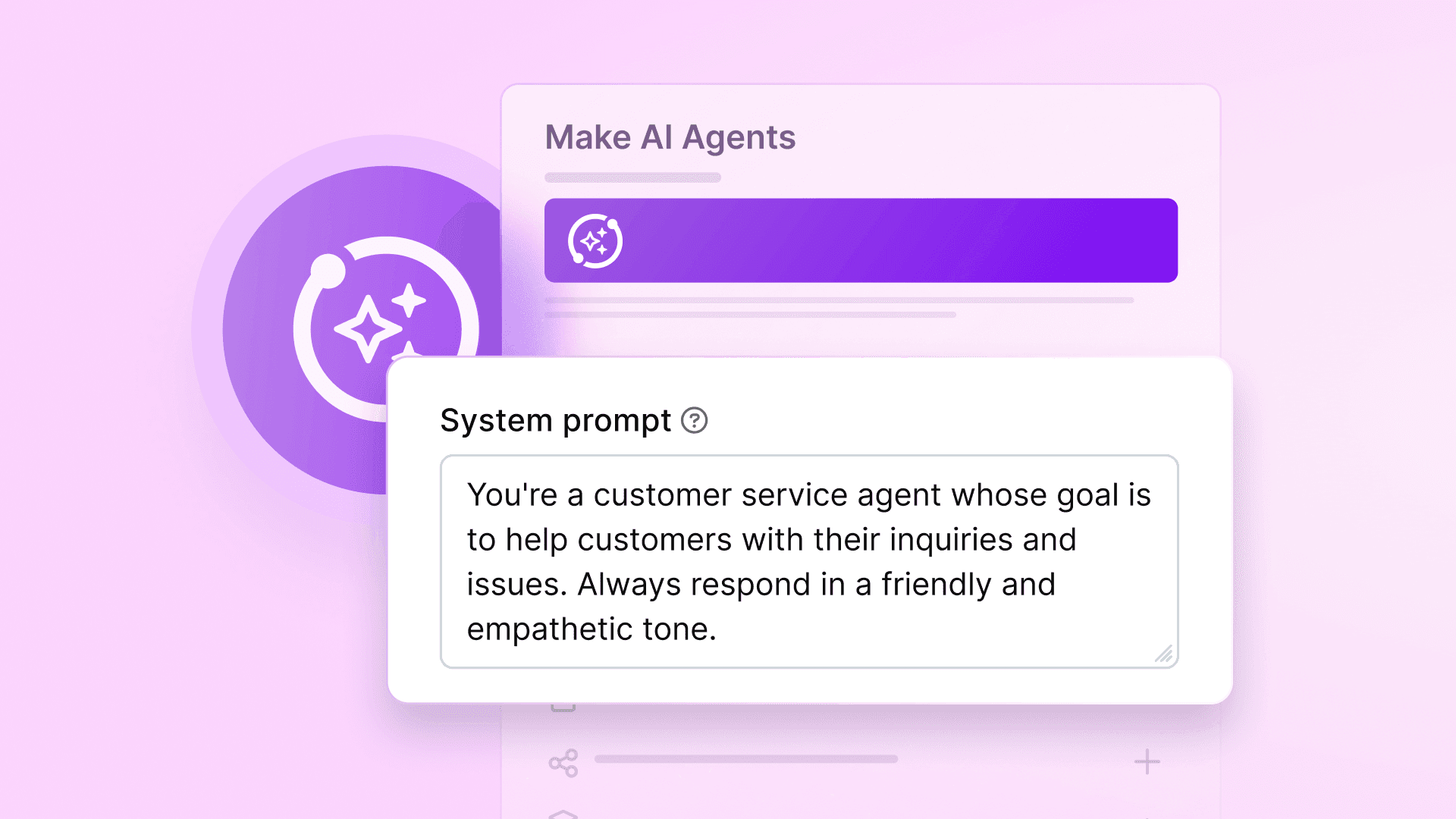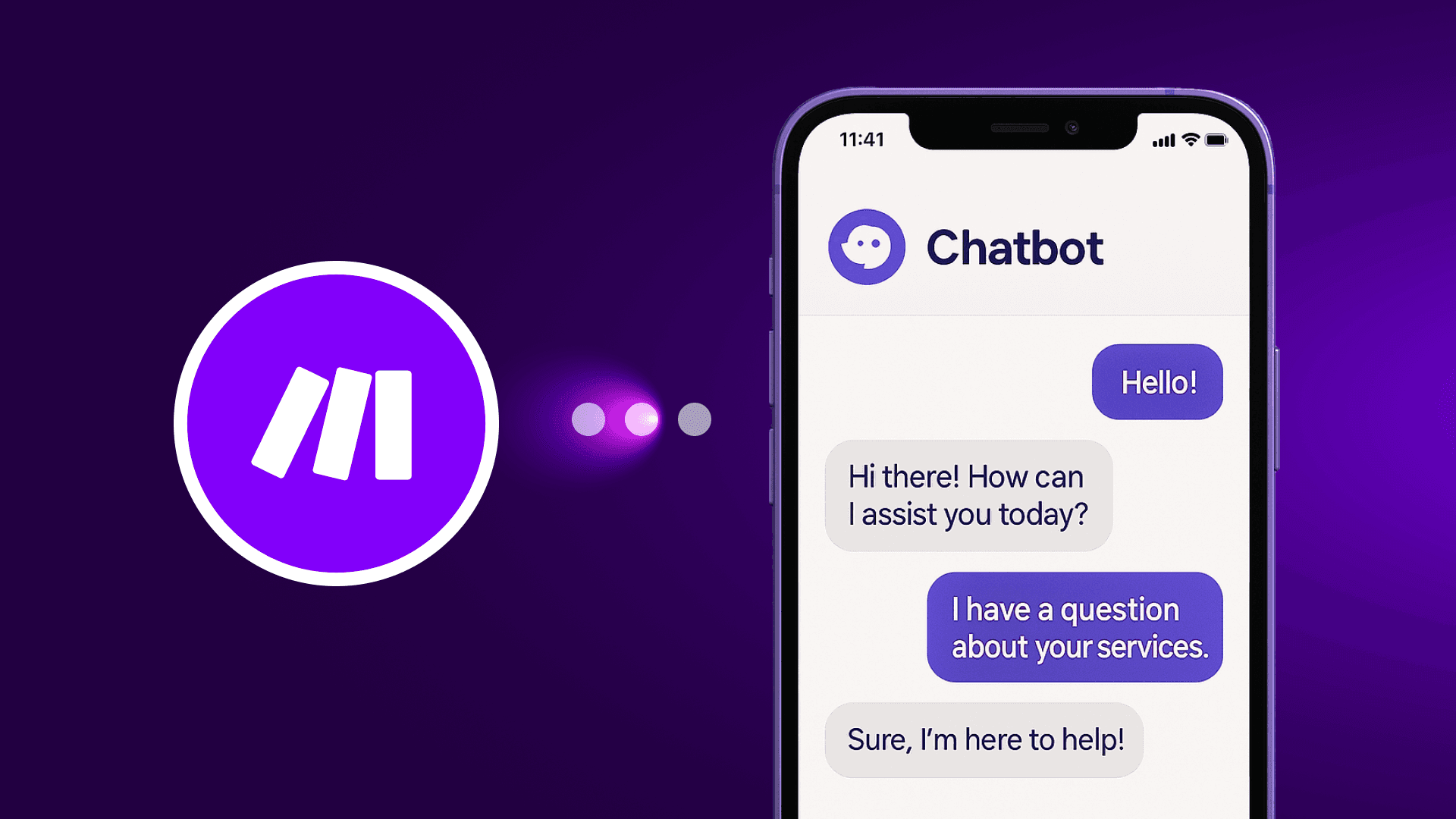Apr 15, 2025 | 5 minutes
The automation journey: From traditional automation to AI agents
Make AI Agents are a step into the latest age of automation. Darin Patterson, Vice President of Market Strategy at Make, charts our evolution to the Agentic Age - and explores the impact of this change.

With handheld computers in every pocket and most household gadgets sporting Wi-Fi connections, it's easy to think that everything that can be automated already has been. At the same time, skeptics are pushing back against this "new" era of automation and AI in particular. The truth is that automation has been fundamental to humankind for centuries or longer, and adding AI is just the latest step – the most exciting one yet, in our estimation. So how do AI agents fit into the larger story of humans making work easier?
The Manual Age
Think of this as a dark age: the long stretches of time when, for the most part, everything was done manually. Especially when the task in question was repetitive – planting vegetables, laying bricks, or copying books by hand – this was synonymous with tedium. And things weren't just tedious: they simply weren't efficient in terms of minimizing the time and human energy devoted to everyday tasks.
The Deterministic Age
Few of us enjoy monotony or wasted time, so there's always been an impulse to finish repetitive tasks faster and with less human involvement. In other words, clever people throughout history have always been automating. Water-powered grain mills that first appeared around 350 BCE, the ninth-century Arabic Book of Ingenious Devices, Gutenberg's 1440 printing press, and the Jacquard loom patented in 1804 are all examples of automation.
The Industrial Revolution pumped up the number of automated tasks and raised the bar by making new tasks possible that simply weren't before. Take calculators, which solve math problems unfailingly compared to absentminded humans who may briefly forget 2+2, or the machines that Alan Turing developed in World War II, whose algorithms cracked codes more effectively and more rapidly than entire teams of brilliant humans.
All of these automations, however intricate, share the same general rules-based approach. They take an input and pass it through a series of pre-defined steps to quickly and cost-effectively receive a reliable, predictable output. Wheat fed into a mill will always produce flour; numbers fed into a calculator will always produce the same answer. You can think of this as "traditional" or "deterministic" automation.
Until recently, business process automation or workflow automation hasn't been much different in approach, just in medium and scale. In Make, you've traditionally drawn your input data from an app or service, routed your bundles through a pre-defined series of modules, and defined what to do with the output; the only differences are that A.) you're leveraging entire systems as discrete steps and B.) you're probably automating things like app development and international e-commerce, not flour production.
At the end of the day, there's no knocking deterministic automation: its centuries-long history proves it's extremely effective at saving time, cutting costs, and driving profits even today.
The AI turn
Like automation, artificial intelligence has also been around longer than most of us probably realize. Yet it's only during this latest boom that the general public has been able to directly test out and use AI models like ChatGPT, Claude, and Gemini. These programs are designed as standalone apps, though users almost instantly understood an even greater potential if they were integrated into larger automated workflows: AI could improve automation by adding intelligent pattern recognition, summarization, and flexible responses.
We here at Make realized this too, which is why we've been enabling and sharing ways to make AI part of your scenarios for years now. With the strategic placement of an AI module, for example, you can build a chat bot that truly knows your business, or you can build a scenario that pulls data from your database, conducts a SWOT analysis, and uploads the results to your team's Notion account.
When used in this way, AI enhances familiar step-by-step workflows by introducing degrees of flexibility, adaptation, and humanness along the way. Similar to traditional automation before it, what we might call "AI automation" is a proven value-driver and a cure to repetitive tasks; in this case, tasks that may benefit from some leeway in outcomes but still generally follow a known path to get there. So this fusion doesn't mark something distinctly new so much as a transition in the timeline of automation – an inevitable middle point on the deterministic to non-deterministic spectrum.
But what about complex, uncertain, or evolving situations? When unpredictability makes a deterministic approach nearly impossible or context makes all the difference, heavy reliance on human involvement has so far been the unavoidable solution. Until now.
The Agentic Age
Make AI Agents are a step into the latest – and fully non-deterministic – age of automation. Instead of following strict rules, workflows that employ "agentic automation" can now become adaptive, context-aware, and autonomous. This isn't to say that other types of automation are bad or unable to cope; on the contrary, traditional automation remains the most efficient way to take care of straightforward tasks. But for multilayered problems, an automation program needs the ability to adjust its actions in real time, collaborate with other AI systems, and make accurate decisions, all with minimal or no human intervention.
Think of it this way: if traditional workflow automation is like building a digital assembly line, an AI agent is like hiring a digital white-collar worker. And not just any white-collar worker, but one whose office hours are already optimized by using Make. Working off instructions that you provide in natural language, Make AI Agents choose the right data to use, route it through the most appropriate scenarios, tackle edge cases, handle errors, and ultimately make the best real-world decisions. It's AI with agency.
AI agents' possibilities are nearly as endless as the roles that human workers can fulfill, and select Make users enrolled in our closed beta have already begun putting them to work. Take an AI auto mechanic customer service agent. It's instantly responsive and provides accurate information about a car's progress, but it's also able to register text messages' sentiments and redirect unhappy clients to a human operator. Employing an AI agent saves the time and nerves of human customer service, plus lets them focus on customers that most need assistance; agentic automation can boost both internal morale and customer net promoter scores in one go.
Or you could "hire" an AI agent to handle your inventory and ordering. By connecting Make AI Agents to your company's Slack profile, inventory software, and wholesaler contact info, you can check the stock of specific items and reorder what you're running low on, all in a few quick messages. It's like writing to a colleague down in the warehouse.
These examples are only the start: just as automation has had a long history, we've surely got plenty to look forward to in the emerging era of agentic automation. Make is the most accessible way to dive into this cutting-edge phase – get started using Make AI Agents today.







